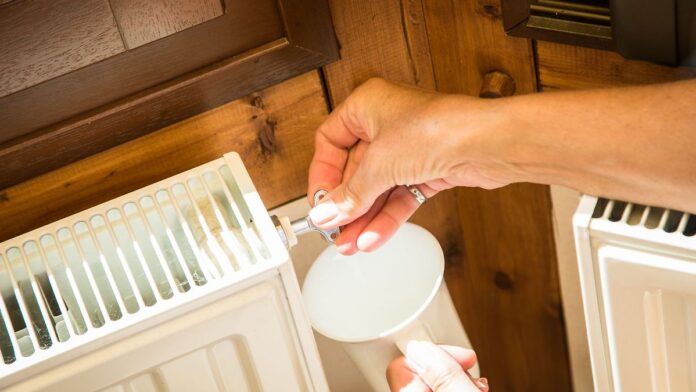Four steps for more warmth
This is how you bleed your heating system now
September 30, 2024, 9:59 a.m
The meteorological beginning of autumn was already – and it’s slowly getting cold. Time to turn on the heater. Read here how to get rid of excess air in the heater and save energy.
If radiators don’t warm up properly or they keep gurgling, this could be due to too much air in the system. And it’s better to get rid of them before it gets really cold. Because radiators that are filled with a lot of air heat more poorly. This ultimately uses more energy.
The good news: According to the DIY Academy in Cologne, venting them can be done in just a few minutes – provided they are modern radiators with a venting valve. Here’s how:
1. Check water pressure
It is best to first switch off the circulation pump and check the water pressure on the heating system or gas boiler. You can see it on the pressure gauge of the heater. How high it should be is stated in the heater’s operating instructions (bar specification).
If the pressure is too low, you must top up with water first. According to the DIY Academy, if you’ve never done this before and are unsure how to do it, it’s better to consult experts. In an apartment building with central heating, consultation with the building management or administration is necessary to refill. The Federal Association of Consumer Organizations points this out on its website.
2. Open valve
The Federal Consumer Association advises that you first turn the thermostat valve fully on, which is usually the case at level 5. Now let the radiator warm up. Then it’s time to open the vent valve on the radiator.
This is usually found at the top on the opposite side of the thermostat. First place a bucket under the valve. Then open the valve with a square bleed wrench. You can get it at hardware stores, for example. But be careful: under no circumstances should you turn the valve all the way out.
3. Don’t lose too much water
The air should now come out of the heater with a hissing sound. Leave the valve open until the air is released – and hot water comes out.
Important: Do not let too much water escape. According to the DIY Academy, too much water loss can affect heating performance. She therefore advises closing the valve immediately as soon as the water drips into the bucket. If the valve is tightly closed, you can also turn the thermostat down again.
4. Check the pressure again
If there is a drop in pressure on the heating pressure gauge after bleeding, you may need to add water to the heating system again. Otherwise, the operating pressure may not be enough to supply all radiators with hot water. However, it may be that air is distributed again in the system – and you have to bleed the radiators again.
If you live on several floors, according to the Federal Association of Consumer Organizations, you should first vent the lower radiators and then the top ones.
According to DIY Academy, if the radiators are in narrow niches, it can also be practical to use a radiator vent with a container instead of a square wrench and bucket. The water coming from the heater is then collected directly. So the floor, walls and wallpaper stay dry.

